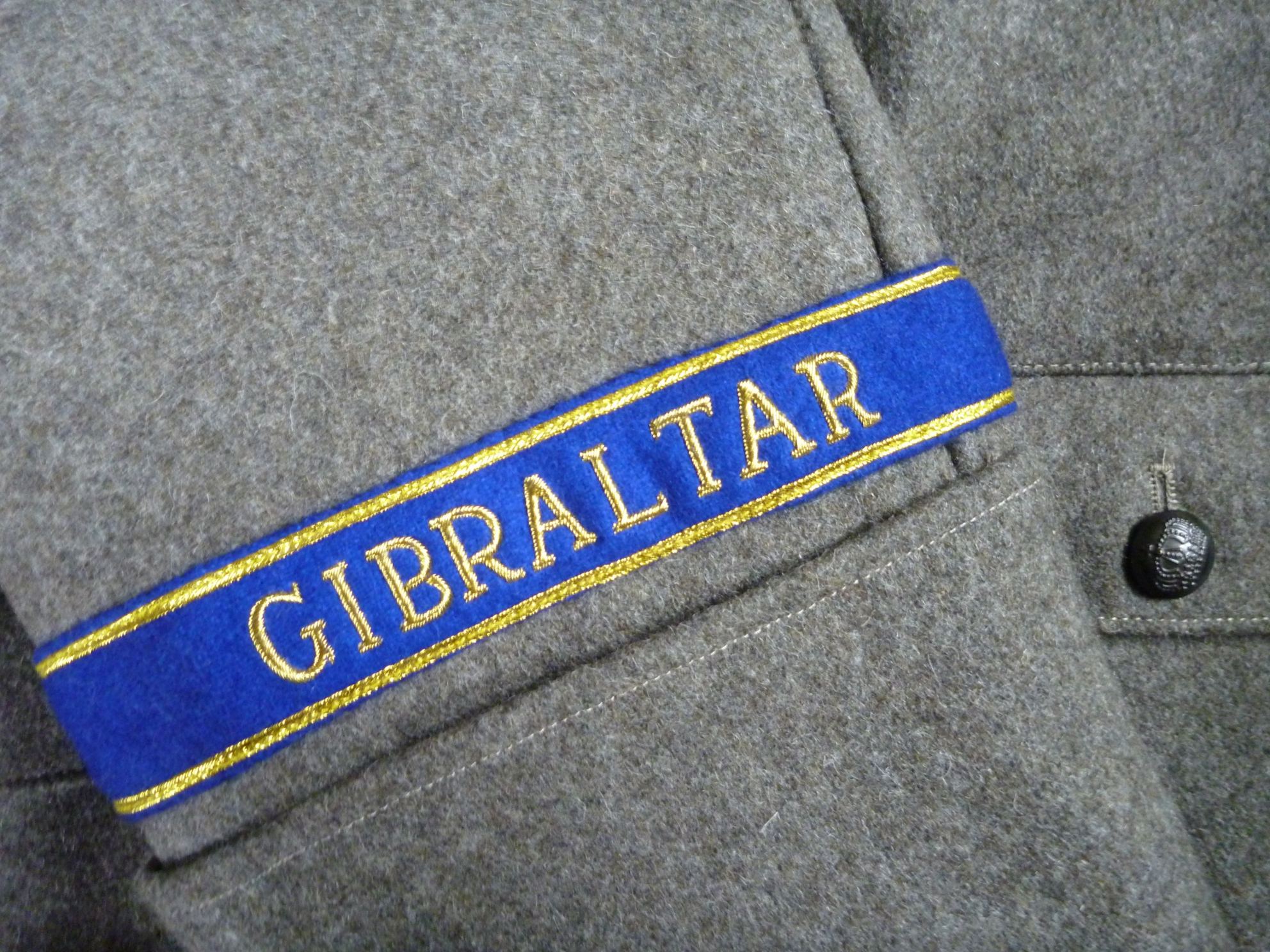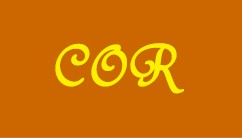|
Cuff Title
The cuff title (German: ''Ärmelstreifen'') is a form of commemorative or affiliation insignia placed on the sleeve, near the cuff, of German military and paramilitary uniforms. The tradition can be traced back to the foundation of the "Gibraltar" cuff title, which was authorised in 1783 by George III for Hanoverian Army troops which fought in the Great Siege of Gibraltar during the American Revolutionary War. Cuff titles are often associated with the Second World War and units of the ''Waffen SS'' but were widely used by all branches of the German military, including Uniforms and insignia of the Schutzstaffel, paramilitary and civilian organizations. Description The base portion of a cuff title is made of either wool, cotton, rayon or a cotton/rayon mix. It is approximately 4 cm (1.6 inches) wide and bears a name or symbol that identifies the wearer belonging to a particular unit or has served in a specific campaign. Machine woven cuff titles became more common as the se ... [...More Info...] [...Related Items...] OR: [Wikipedia] [Google] [Baidu] |
Sleeve
A sleeve (, a word allied to '' slip'', cf. Dutch ) is the part of a garment that covers the arm, or through which the arm passes or slips. The sleeve is a characteristic of fashion seen in almost every country and time period, across a myriad of styles of dress. Styles vary from close-fitting to the arm, to relatively unfitted and wide sleeves, some with extremely wide cuffs. Long, hanging sleeves have been used variously as a type of pocket, from which the phrase "to have up one's sleeve" (to have something concealed ready to produce) comes. There are many other proverbial and metaphorical expressions associated with the sleeve, such as "to wear one's heart upon one's sleeve", and "to laugh in one's sleeve". Early Western medieval sleeves were cut straight, and underarm triangle-shaped gussets were used to provide ease of movement. In the 14th century, the rounded sleeve cap was invented, allowing a more fitted sleeve to be inserted, with ease around the sleeve head and a ... [...More Info...] [...Related Items...] OR: [Wikipedia] [Google] [Baidu] |
Cuff
A cuff is a layer of fabric at the lower edge of the sleeve of a garment (shirt, coat, jacket, etc.) at the wrist, or at the ankle end of a trouser leg. The function of turned-back cuffs is to protect the cloth of the garment from fraying, and, when frayed, to allow the cuffs to be readily repaired or replaced, without changing the garment. Cuffs are made by turning back (folding) the material, or a separate band of material can be sewn on, or worn separately, attached either by buttons or studs. A cuff may display an ornamental border or have lace or some other trimming. In US usage, the word ''trouser cuffs'' refers to the folded, finished bottoms of the legs of a pair of trousers. In the UK, while this usage is now sometimes followed, the traditional term for the turned up trouser hem is 'turnup'. History Between the 15th and 18th centuries, rich men often wore sleeve cuffs ornamented with fine lace. Catholic clergy have the cuffs of their choir dress ornamented with fine ... [...More Info...] [...Related Items...] OR: [Wikipedia] [Google] [Baidu] |
Gibraltar
Gibraltar ( , ) is a British Overseas Territories, British Overseas Territory and British overseas cities, city located at the southern tip of the Iberian Peninsula, on the Bay of Gibraltar, near the exit of the Mediterranean Sea into the Atlantic Ocean (Strait of Gibraltar). It has an area of and is Gibraltar–Spain border, bordered to the north by Spain (Campo de Gibraltar). The landscape is dominated by the Rock of Gibraltar, at the foot of which is a densely populated town area. Gibraltar is home to some 34,003 people, primarily Gibraltarians. Gibraltar was founded as a permanent watchtower by the Almohad Caliphate, Almohads in 1160. It switched control between the Nasrids, Crown of Castile, Castilians and Marinids in the Late Middle Ages, acquiring larger strategic clout upon the destruction of nearby Algeciras . It became again part of the Crown of Castile in 1462. In 1704, Anglo-Dutch forces Capture of Gibraltar, captured Gibraltar from Spain during the War of the S ... [...More Info...] [...Related Items...] OR: [Wikipedia] [Google] [Baidu] |
George III
George III (George William Frederick; 4 June 173829 January 1820) was King of Great Britain and King of Ireland, Ireland from 25 October 1760 until his death in 1820. The Acts of Union 1800 unified Kingdom of Great Britain, Great Britain and Kingdom of Ireland, Ireland into the United Kingdom of Great Britain and Ireland, with George as its king. He was concurrently Duke and Prince-elector of Electorate of Hanover, Hanover in the Holy Roman Empire before becoming King of Hanover on 12 October 1814. He was the first monarch of the House of Hanover who was born in Great Britain, spoke English as his first language, and never visited Hanover. George was born during the reign of his paternal grandfather, George II of Great Britain, King George II, as the first son of Frederick, Prince of Wales, and Princess Augusta of Saxe-Gotha. Following his father's death in 1751, Prince George became heir apparent and Prince of Wales. He succeeded to the throne on George II's death in 1760. Th ... [...More Info...] [...Related Items...] OR: [Wikipedia] [Google] [Baidu] |
Hanoverian Army
The Hanoverian Army (German: ''Hannoversche Armee'') was the standing army of the Electorate of Hanover from the seventeenth century onwards. From 1692 to 1803 it acted in defence of the electorate. Following the Hanoverian Succession of 1714, this was in conjunction with the British Army with which it shared a monarch. Hanoverian troops fought in the War of the Austrian Succession, Seven Years' War and American War of Independence during the eighteenth century. After Napoleon's invasion and incorporation of Hanover into the Confederation of the Rhine in 1803, many exiled members of the army served in Britain's King's German Legion. In 1813 the Hanoverian Army was reformed under Prince Adolphus, Duke of Cambridge and took part in the final defeat of Napoleon at the Battle of Waterloo. Following the Congress of Vienna, Hanover was elevated into a kingdom. It continued to be directly tied to Britain until 1837 when, after the death of William IV, Hanover's Salic Law led it to crown ... [...More Info...] [...Related Items...] OR: [Wikipedia] [Google] [Baidu] |
Great Siege Of Gibraltar
The Great Siege of Gibraltar was an unsuccessful attempt by Enlightenment in Spain, Spain and Kingdom of France, France to capture Gibraltar from the Kingdom of Great Britain, British during the American Revolutionary War. It was the largest battle in the war by number of combatants. On 16 June 1779, Spain entered the war on the side of France and as co-belligerents of the American Revolution, revolutionary United States—the British base at Gibraltar was Spain's primary war aim. The vulnerable Gibraltar garrison under George Augustus Eliott, 1st Baron Heathfield, George Augustus Eliott was blockaded from June 1779 to February 1783, initially by the Spanish alone, led by Martín Álvarez de Sotomayor. The blockade proved to be a failure because two relief convoys entered unmolested—the first under Admiral (Royal Navy), Admiral George Brydges Rodney, 1st Baron Rodney, George Rodney in 1780 and the second under Admiral George Darby in 1781—despite the presence of the Spanish ... [...More Info...] [...Related Items...] OR: [Wikipedia] [Google] [Baidu] |
American Revolutionary War
The American Revolutionary War (April 19, 1775 – September 3, 1783), also known as the Revolutionary War or American War of Independence, was the armed conflict that comprised the final eight years of the broader American Revolution, in which American Patriot (American Revolution), Patriot forces organized as the Continental Army and commanded by George Washington defeated the British Army during the American Revolutionary War, British Army. The conflict was fought in North America, the Caribbean, and the Atlantic Ocean. The war's outcome seemed uncertain for most of the war. However, Washington and the Continental Army's decisive victory in the Siege of Yorktown in 1781 led King George III and the Kingdom of Great Britain to negotiate an end to the war in the Treaty of Paris (1783), Treaty of Paris two years later, in 1783, in which the British monarchy acknowledged the independence of the Thirteen Colonies, leading to the establishment of the United States as an independent and ... [...More Info...] [...Related Items...] OR: [Wikipedia] [Google] [Baidu] |
Waffen SS
The (; ) was the combat branch of the Nazi Party's paramilitary ''Schutzstaffel'' (SS) organisation. Its formations included men from Nazi Germany, along with volunteers and conscripts from both German-occupied Europe and unoccupied lands. With the start of World War II, tactical control was exercised by the (OKW, "High Command of the Armed Forces"), with some units being subordinated to the (Command Staff ''Reichsführer-SS'') directly under Himmler's control. It was disbanded in May 1945. The grew from three regiments to over 38 divisions during World War II. Combining combat and police functions, it served alongside the German Army (''Heer''), ''Ordnungspolizei'' (Order Police), and other security units. Originally, it was under the control of the (SS operational command office) beneath Heinrich Himmler, the head of the SS. Initially, in keeping with the racial policy of Nazi Germany, membership was open only to people of Germanic origin (so-called " Aryan ancestr ... [...More Info...] [...Related Items...] OR: [Wikipedia] [Google] [Baidu] |
Uniforms And Insignia Of The Schutzstaffel
The uniforms and insignia of the ''Schutzstaffel'' (SS) served to distinguish its Nazi Germany paramilitary ranks, Nazi paramilitary ranks between 1925 and 1945 from the ranks of the ''Wehrmacht'' (the German armed forces from 1935), the Nazi Germany, German state, and the Nazi Party. Uniform design and function While different uniforms existed for the SS over time, the all-black SS uniform adopted in 1932 is the most well known. The black–white–red colour scheme was characteristic of the German Empire, and it was later adopted by the Nazi Party. Further, black was popular with Fascism, fascist movements: a black uniform was introduced by the blackshirts in Kingdom of Italy, Italy before the creation of the SS. There was a traditional reason, too: just as the Prussian kings' and emperors' life-guard cavalry (''Leibhusaren'') had worn Totenkopf#Prussia, black uniforms with skull-and-crossbones badges, so would the ''Führer''s bodyguard unit. These SS uniforms were tailored to ... [...More Info...] [...Related Items...] OR: [Wikipedia] [Google] [Baidu] |







